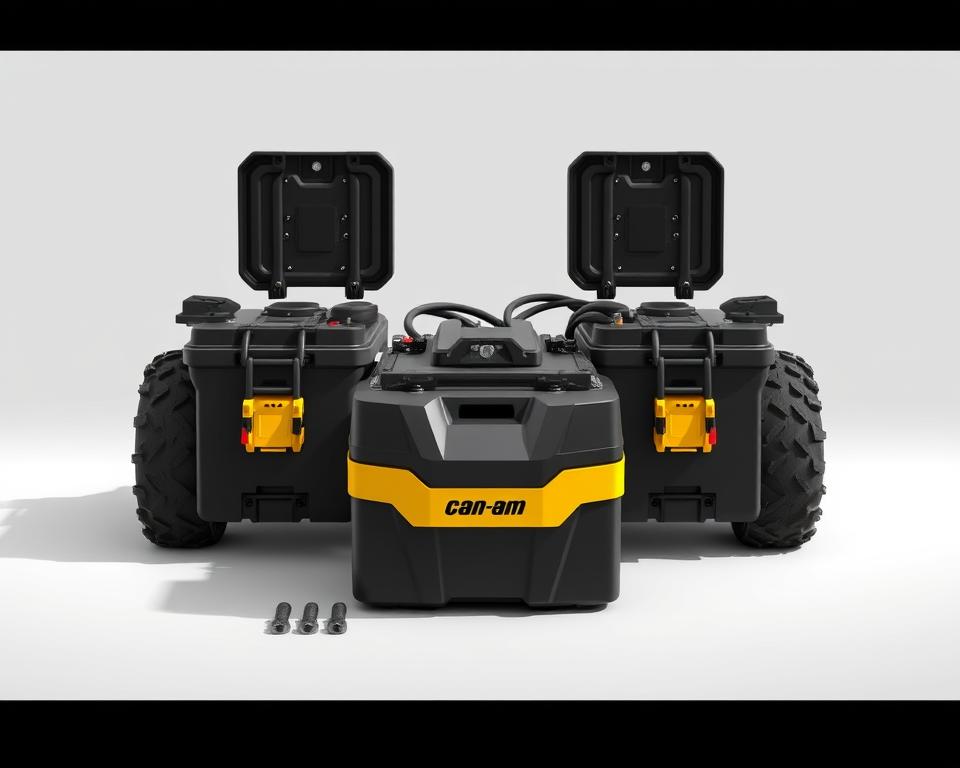Kokoro Cleaning Las Vegas — Dependable Cleaning Company
A property manager I spoke with thought a quick sweep would fix every problem. After our first inspection, she wanted a better plan. We analyzed traffic paths, measured air quality, and tuned routines. The change made the office feel new—calm, fresh, and prepared for work.
Kokoro Cleaning Services is the local team behind professional sanitizing company, providing dependable commercial cleaning with customized residential plans. Technicians are trained, vetted, and supervised so every cleaning service produces a professionally cleaned result that reduces dust, allergens, and touchpoint contamination.
Count on clear scheduling, quick support, and eco-forward products that preserve finishes and wellness. If you want an environment that feels clean, discover Kokoro clean via a quick call or form and trust Kokoro cleaning for measurable long-term results.
Experience Kokoro Clean: Commercial-Grade Results That Bring Calm to Your Space
A consistent commercial routine can transform a hectic lobby into a calm, welcoming zone. You get consistent, measurable outcomes with Kokoro cleaning service so a cleaned space feels organized and stable for staff and guests.
Our teams apply quiet, efficient methods supported by checklists and documented QA. Site protocols for services Las Vegas properties include compliant chemicals, OSHA-aware practices, and extra focus on high-touch zones during peak seasons.
- Scheduling around business hours to limit disruption.
- Standardized supplies and supervisor checks for quick verification.
- Trained technicians protect finishes and assets on tight timelines.
| Facility Area | Primary Benefit | Common Outcome |
|---|---|---|
| Showrooms & Lobbies | Strong first impressions | Better reviews and conversion |
| Clinic Reception | Reduced stress | Improved patient comfort |
| Hospitality Suites | Uniform brand presentation | More repeat bookings |
With reliable field communication and clear escalation, Kokoro brings calm rapidly after surprises. The outcome is a space that feels clean, serene, and returns calm to the property when it matters most.

Kokoro Cleaning Las Vegas
From busy office towers to quiet gated residences, our local crew tailors plans to your property.
As Kokoro cleaning’s local full-service provider, we deliver flexible plans for every Las Vegas property. Homeowners and businesses schedule recurring or on-demand visits aligned to occupancy and events.
Our edge comes from quick quoting, trained crews, on-site supervision, and consistent supplies so each cleaning service hits the same standard. We focus on clutter reduction, correct dwell times, and careful floor care so the environment feels orderly and sanitary.
| Cleaning Focus | Approach | Advantage |
|---|---|---|
| Task Order | Microfiber tools | Quicker, more thorough results |
| Air Quality | HEPA filtration as needed | Rediscover relaxing environment |
| Finish-Aware Care | Technicians trained on finishes | Protects surfaces for a clean, serene feel |
Following renovation, move-out, or peak traffic, Kokoro brings calm and returns serenity to your property. Get in touch for a walkthrough and plan so you’re ready to enjoy cleaner spaces with minimal disruption.
Las Vegas Commercial Cleaning Services
Every facility—from reception to loading docks—benefits from targeted care. Our commercial cleaning services pair specialized crews with schedules that match your operation.
Office and Corporate Suites
Select nightly or daytime porter service for conference resets, glass detailing, touchpoint disinfection, and floor care. These routines keep executive areas ready and presentable.
Hospitality, Restaurants, and Retail
We manage degreasing, front-of-house shine, BOH sanitation, and odor control so the setting feels clean for guests while meeting local rules and health codes.
Clinics, Dental, and Wellness
We apply zone-based protocols with EPA-registered disinfectants and color-coded microfiber. Trained staff deliver a professionally cleaned result with safe workflow separation.
Industrial & Warehouse Spaces
Our services cover debris removal, machine-adjacent cleaning, and dust control that protect inventory and follow safety protocols.
Flexible scheduling—after-hours, early-morning, split shifts—plus supervisor inspections, digital checklists, and consumable tracking keep budgets predictable. Finish-specific care for stone, LVT, epoxy, and stainless helps extend asset life. Seasonal plans address dust mitigation and peak tourism in the Las Vegas valley.
Next steps: request a site visit, confirm scope, and set cadence mapped to occupancy/building type to keep a reliably cleaned space.
Industries We Serve Across the Las Vegas Valley
Different buildings require different rhythms—our crews adapt to keep busy sites presentable and upscale properties pristine across the Las Vegas valley.
High-traffic spaces such as casinos, retail centers, and medical offices need daily attention. Plans align to visitor flow and hours to limit disruption.
Repeatable routines keep aisles, restrooms, and lobbies continuously presentable. The result helps bring calm serenity back to busy interiors and improves guest experience.
Hospitality, Boutique & Luxury
For boutique hotels and flagship stores, our detailing focuses on fingerprint-free glass, smudge-free metals, and textile care so every surface reads as a professionally cleaned space.
- Scalable staffing handles events and seasonal surges without losing quality across shifts.
- Supervisor walkthroughs enable fast feedback loops aligned to industry priorities.
- We select chemistries that respect designer finishes and clinical guidelines to protect assets and health.
These steps create an inviting home feel in boutique and extended-stay properties. Begin with an operational audit, schedule modeling, and uptime-tied KPIs for clear scope and reliable results.
Residential Home Cleaning: Rediscover a Relaxing Environment
A tidy home resets the mind and invites calm after a busy day.
We offer premium residential plans with boutique-level detail in every room. Choose recurring visits, seasonal deep cleans, or move-in/move-out options customized for layout, lifestyle, and finishes.
Home Cleaning Services — Experience Luxury—Professionally Cleaned Spaces
Enjoy a relaxing environment via meticulous dusting, bathroom sanitation, kitchen degreasing, and precise floor care. Expect a luxury professionally cleaned finish using polish-safe techniques for stone, wood, chrome, and specialty fixtures.
- White-glove checks: baseboards, vents, switches, and hardware.
- Family-conscious products protecting air quality and surfaces.
- Add-ons: appliance interiors, grout brightening, closet refreshes.
| Package | Emphasis | Benefit |
|---|---|---|
| Ongoing | Routine weekly/biweekly upkeep | A consistent, inviting home feel |
| Detail Deep Clean | Seasonal/event preparation | Refreshed finishes and air quality |
| Move-In or Move-Out | Full detailing and staging | Ready for occupancy presentation |
| À la carte | Targeted add-ons | Standout sanctuary results |
Technicians bring an eye for folds, straightening, and presentation that signals quality. Pick a cadence so the relaxing environment feels consistent week after week.
Our Process — Professionally Cleaned, Clean & Serene
We begin each project with a clear walkthrough to learn how your space is used and what matters most. Throughout, we set expectations and verify outcomes so it feels clean and supports daily operations.
Assessment • Scope • Custom Plan
We document surfaces, traffic, and compliance needs during assessment. Then we propose a scope that aligns frequency, task lists, and timing with operations.
Detail-Driven Cleaning with QA
Technicians use color-coded systems and methodical sequencing so each room is ready. Supervisors use digital checklists and photo verification to ensure consistency and to trust Kokoro cleaning.
“The work is measured, verified, and adjusted—so the space remains orderly even during peak loads.”
Eco-Conscious Products • Proven Methods
Eco-conscious chemistry with HEPA or microfiber tools is specified as needed. Ongoing training plus client-facing notes after visits keep standards high.
| Stage | What We Do | Deliverable |
|---|---|---|
| Discovery | Documented walkthrough | Custom plan aligned with priorities |
| Service | Color-coded systems & sequencing | Spaces ready and professionally cleaned |
| Verification | Digital QA & escalation steps | Predictable results to bring calm serenity |
We use quarterly reviews to adjust scope and cadence, sustaining calm and an orderly environment feels over time.
Healthier Environments: How Kokoro Brings Calm Serenity Back
Focused methods on efficacy and safety make cleaner air and clearer surfaces noticeable fast. Targeted disinfection, proper dwell times, and microfiber capture lower allergens and surface soils so the space feels clean and ready for routine use.
Here’s why Kokoro Cleaning Las Vegas succeeds: with measured dwell times killing pathogens, microfiber trapping fine particles, and routine equipment care preserving filter performance. These steps help the space feels clean while avoiding harsh residues or surface damage.
Kokoro returns calm via orderly surfaces, neutral odors, and clear pathways. After busy events, our crews restore polish and organization so the site quickly brings calm serenity and puts calm serenity back into daily operations.
Many occupants report immediate changes—air that feels clean serene, clearer counters, refreshed floors. With healthier protocols, people rediscover relaxing environment at home and work, and Las Vegas clients are ready enjoy cleaner routines with reliable arrivals.
“Consistent, health-forward routines reduce sick days and leave guests feeling welcome and well cared for.”
We coach staff and families on touchpoint priorities so benefits last between visits. Over time, steady service prevents buildup and avoids emergency cleanups—so you can simply enjoy cleaner spaces that support focus and well-being.
Service Areas — Las Vegas • Henderson • Summerlin • Greater Valley
With mobile crews across the valley, we deliver scheduled visits and urgent support when needed. We staff routes to keep arrival windows and building access within strict protocols.
Detail coverage includes Downtown, The Strip, the Arts District, and key corridors. It ensures a fast response for Las Vegas properties needing scheduled or urgent attention.
We support casinos, offices, retail centers, and restaurants via after-hours and day porter options.
Gated Communities & Neighborhoods
Summerlin, Henderson, Anthem, and nearby suburbs are served. Teams coordinate HOA rules, gate access, and parking for efficient home cleaning.
- Single-family homes, condos, and townhomes receive customizable checklists.
- High-rise logistics, dock schedules, and waste compliance get planned in advance.
- We cache supplies on routes to reduce trips and protect timelines; supervisors backstop coverage.
| Area | Core Focus | Usual Service | Details |
|---|---|---|---|
| Downtown/Corridors | Fast business response | After-hours porter & event resets | Elevator logistics handled |
| Strip & Hospitality | High-turn sites | Nightly shifts & deep cleaning | Coordinated vendor access |
| Gated & Suburbs | Residential home care | Recurring and one-time visits | Compliance with HOA and gates |
Uniform training, digital QA, and route supervision keep the professionally cleaned space standard consistent across the Las Vegas valley. Contact us to match frequency and scope to commute patterns, occupancy, and event calendars via the Kokoro cleaning service scheduling team.
Transparent Estimates & Pricing
Our pricing is simple, so you know what to expect pre-visit. No-obligation written quotes make decisions clear. It helps businesses and homeowners plan confidently.
Get a Free Estimate — Commercial Cleaning
Request a free estimate and we’ll walk through scope drivers like square footage, traffic, complexity, and compliance needs. Select either an on-site or virtual walkthrough.
- A quick discovery call to capture priorities.
- Walkthrough—on-site or virtual—for accurate pricing.
- Written scope with line-item transparency (tasks, frequency, supplies).
Custom Quotes for Exceptional Residential Home Cleaning
Residential quotes reflect room counts, materials, and cadence to fit your lifestyle. We itemize add-ons (window detailing, appliance interiors, seasonal packages) for easy decisions.
“No surprises: we scope specialty tasks up front to avoid surcharges and maintain trust.”
We support procurement needs—COIs, monthly invoicing for multi-site accounts, and scheduled pricing reviews that change only when scope changes. Discover Kokoro clean with full clarity and predictable budgets for cleaning services in Las Vegas and beyond.
Book Now — Learn, Schedule, Enjoy a Cleaner Property
Ready to stop waiting and start enjoying a cleaner home or workspace today?? Call or use our quick form to book now home. We respond quickly to confirm a walkthrough and scope.
- Consultation: brief call or virtual walkthrough.
- Plan draft: tailored proposal and sample checklist to discover Kokoro clean.
- Schedule selection: pick timing that limits disruption.
- Confirm first service: on-time arrival, uniformed team, supervisor verification.
Kokoro cleaning service promises punctual teams, verified checklists, and flexible starts; many Las Vegas properties begin the same week.
| Action | Deliverable | When |
|---|---|---|
| Sample Checklist | Tasks specific to facility or home | In 24 hours |
| Extras | Closet refresh, appliance interiors, seasonal deep clean | Scheduled with service |
| Recurring Plans | Flexible cadence and priority scheduling | Monthly, biweekly, or weekly |
Choose a plan to ready enjoy cleaner days and nights. A single booking can reclaim personal sanctuary routines and deliver a personal sanctuary exceptional environment each visit.
Results You Can Feel — Inviting Home & Work Environments
A focused reset on high-impact zones can change how people use and enjoy a space. Prompt work in entries, kitchens, restrooms yields visible results staff and guests notice.
From Cluttered to Calm—Serenity Back to Your Property
After the first visits, clutter becomes order and the environment feels calmer, more functional. Surfaces clear, pathways open, and rooms present an inviting home or welcoming lobby.
Persistent dust/residue removal helps interiors feels clean and feels clean serene. Lighter air and clear counters improve comfort and confidence for occupants.
Sequenced tasks focus on kitchens, restrooms, entries first to create an immediate lift. This approach brings calm serenity back faster than random tasks.
Expect a professionally cleaned appearance from correct dwell times, microfiber capture, and finish-friendly chemistries. The cleaned space advantage shows in better productivity, improved guest perception, and less visual noise.
| Area | First-Visit Impact | Recurring Benefit |
|---|---|---|
| Entry & Lobby | Aligned furnishings with clear sightlines | Steady impressions — inviting home or lobby feel |
| Kitchen | Odor reduction with immediate surface shine | Fewer emergency deep cleans and weekly time savings |
| Washrooms | Sanitary surfaces for confident use | Premium finish care yields lasting hygiene |
Recurring home cleaning services experience yields longer-lasting results and fewer surprise tasks. Clients seeking luxury mention the cleaning services experience luxury and how premium surfaces maintain a luxury professionally cleaned finish.
With routine visits, cleaning services reclaim personal time and services reclaim personal sanctuary habits are supported. With steady care, a sanctuary exceptional residential result and a personal sanctuary exceptional feel become the norm.
Trusted by Clients Who Highly Recommend Kokoro Cleaning
Clients repeatedly say that predictable results and quick responses changed how their sites operate. Reviews often note consistency, clear communication, and strong attention to detail.
Business clients recommend Kokoro cleaning when restrooms are audit-ready, lobbies spotless, and workstations pass inspections. Managers report higher guest scores with smoother daily operations.
For reliable access, careful material handling, and visible transformation each visit, homeowners trust Kokoro cleaning. Regular residential home cleaning clients cite consistent teams who know preferences and floorplans.
Supervision and photo-verified checklists give transparency and accountability. That approach to Kokoro cleaning service reassures property managers and families.
- Examples include offices, multi-unit homes, retail suites, hospitality rooms showing better ratings and staff satisfaction.
- For special events or last-minute needs, we adapt and keep standards steady.
- The right home cleaning cadence extends results and reduces emergency deep cleans.
| Property Type | Key Benefit | Typical Result |
|---|---|---|
| Offices | Restrooms ready for audits | Better compliance scores |
| Multi-unit Home | Consistent teams | Higher resident reviews |
| Hospitality | Finish protection | Exceptional residential home presentation |
“They arrive on time, document work, and leave spaces inspection-ready.”
Kokoro Cleaning Services in Las Vegas — Why Choose Us
Trusted service starts with technicians who know local venues and their daily rhythms.
Reliability, Local Expertise, Consistent Quality
Our team pairs local knowledge with repeatable methods. Both technicians and supervisors know finishes, event schedules, and peak season demands.
Consistent arrival windows, backup crews, and clear communication are guaranteed so each cleaning service finishes on time as planned.
- Standardized protocols and color-coding deliver repeatable, professionally cleaned results.
- Plans scale from commercial to tailored home cleaning service with no loss in quality.
- Finish care and product choices protect floors, stone, and metal for a luxury professionally cleaned appearance.
| Strength | What It Means | Outcome |
|---|---|---|
| Compliance Readiness | Insurance, COIs, OSHA, MSDS | Audit-ready operations |
| Tech Stack | KPI tracking with photos and digital logs | Accountability and insight |
| Fast Support | Spill response and event support across services Las Vegas | Less downtime thanks to fast recovery |
Kokoro cleaning service managers meet to refine scope and value. This yields clear pricing, measurable performance, and a partner that protects property and time.
Quality Assurance, Safety, and Standards You Can Trust
We enforce strict protocols so every visit meets safety and quality standards. Each shift starts with PPE checks, chemical label reviews, and equipment maintenance logs to protect staff and occupants.
QA relies on checklists, supervisor inspections, and client sign-off to confirm a professionally cleaned space every time. Field reports document incidents and resolutions so teams learn and improve.
We emphasize methods, correct dwell times, and cross-contamination barriers in training so the environment feels clean consistently. Residential assignments receive the same QA rigor as commercial accounts, scaled for layout and materials.
- Access and site rules—loading docks, access cards, quiet hours—are respected.
- Backup crews cover call-outs to keep services las on time.
- Supervisors coach finish protection and guest-friendly conduct each service.
| Area | Control | Result |
|---|---|---|
| Safety Program | Maintenance, labeling, PPE | Lower risk for occupants and staff |
| Quality Control | Checklist-driven inspections | Consistent, professionally cleaned results |
| Reporting | Reports and incident logs | Clear client records with continuous improvement |
Across the Las Vegas valley, we apply these standards for home and commercial cleaning. Regular reports include before/after notes and recommendations to help a residential home stay professionally cleaned longer.
Your Personal Sanctuary: Services to Reclaim Calm and Comfort
Create a predictable refuge at home with services that respect routines and finishes.
Scheduled maintenance keeps your personal sanctuary exceptional week after week. Regular visits focus on timing, task sequencing, and consistent supplies so rooms stay orderly with minimal disruption.
Deep Cleaning or Scheduled Maintenance
Choose recurring care for steady results or a one-time deep clean that resets surfaces. Deep work targets kitchens, baths, appliance interiors, and baseboards to restore sanctuary exceptional residential standards.
- Routine plans replace chores, letting cleaning services reclaim personal time on busy schedules.
- Priority plans give services reclaim personal sanctuary clients faster booking and flexible windows.
- Morehome cleaning services reclaim includes seasonal refreshes—pre-holiday, post-reno, or new-baby.
Options for home cleaning services experience range from standard upkeep to premium add-ons. We tailor methods so delicate materials/fixtures receive cleaning services experience luxury care.
| Package | Focus | Key Benefit |
|---|---|---|
| Ongoing | Regular weekly or biweekly | Less mental load, steady calm |
| Premium Deep Clean | Complete detail reset | Sanctuary exceptional residential feel |
| Delicate-Care Premium | Delicate care & priority booking | Services experience luxury professionally results |
Each residential home cleaning visit includes supervision with QA checks. The result: exceptional residential home that reduces stress, improves comfort, supports daily wellness.
Ready to Enjoy a Cleaner Space? Discover Kokoro Clean Today
Schedule a quick walkthrough to map priorities and get a tailored plan the same day. For most properties, we provide a written scope and get free estimate within one business day.
Try a short trial visit or pilot program to see measurable results fast. Many clients are ready enjoy cleaner after the first service and enjoy cleaner routines immediately.
- Request a walkthrough to receive proposal and timeline.
- Book now home via phone, form, or email with preferred time windows.
- Pilot visits cover needs assessment, written scope, scheduling, and a first-visit checklist for transparency.
We cover cleaning services las and services Las Vegas areas with flexible scheduling. Supervisors verify outcomes and adjust scope to drive continuous improvement.
Businesses and homeowners often recommend Kokoro cleaning and highly recommend Kokoro due to reliability. Bundle windows, carpets, or stone detailing for comprehensive results.
- Call us or submit the quick form.
- Obtain a free estimate and schedule.
- Confirm arrival time window and enjoy the first verified service.
Staffing fills quickly across Las Vegas—reserve preferred days now to secure the best times.
Bringing It All Together
Consistent standards plus trained teams ensure Kokoro brings calm in commercial and residential settings. Quality is standardized, finishes protected, schedules aligned so each room becomes inviting or efficient.
With our methods you rediscover relaxing environment and keep the relaxing environment feels steady week after week.
Request a walkthrough for your Las Vegas property to see the difference. Get free estimate with clear scopes and flexible timing. Many clients recommend Kokoro cleaning and highly recommend Kokoro for responsive, steady results.
Choose a plan—home cleaning services experience or cleaning services experience luxury—to reclaim time and restore a cleaned space that feels clean and orderly. Book now home cleaning and secure preferred slots.








